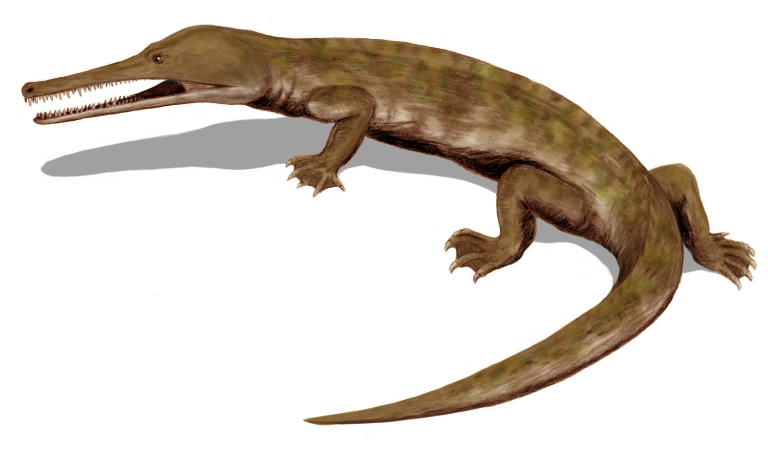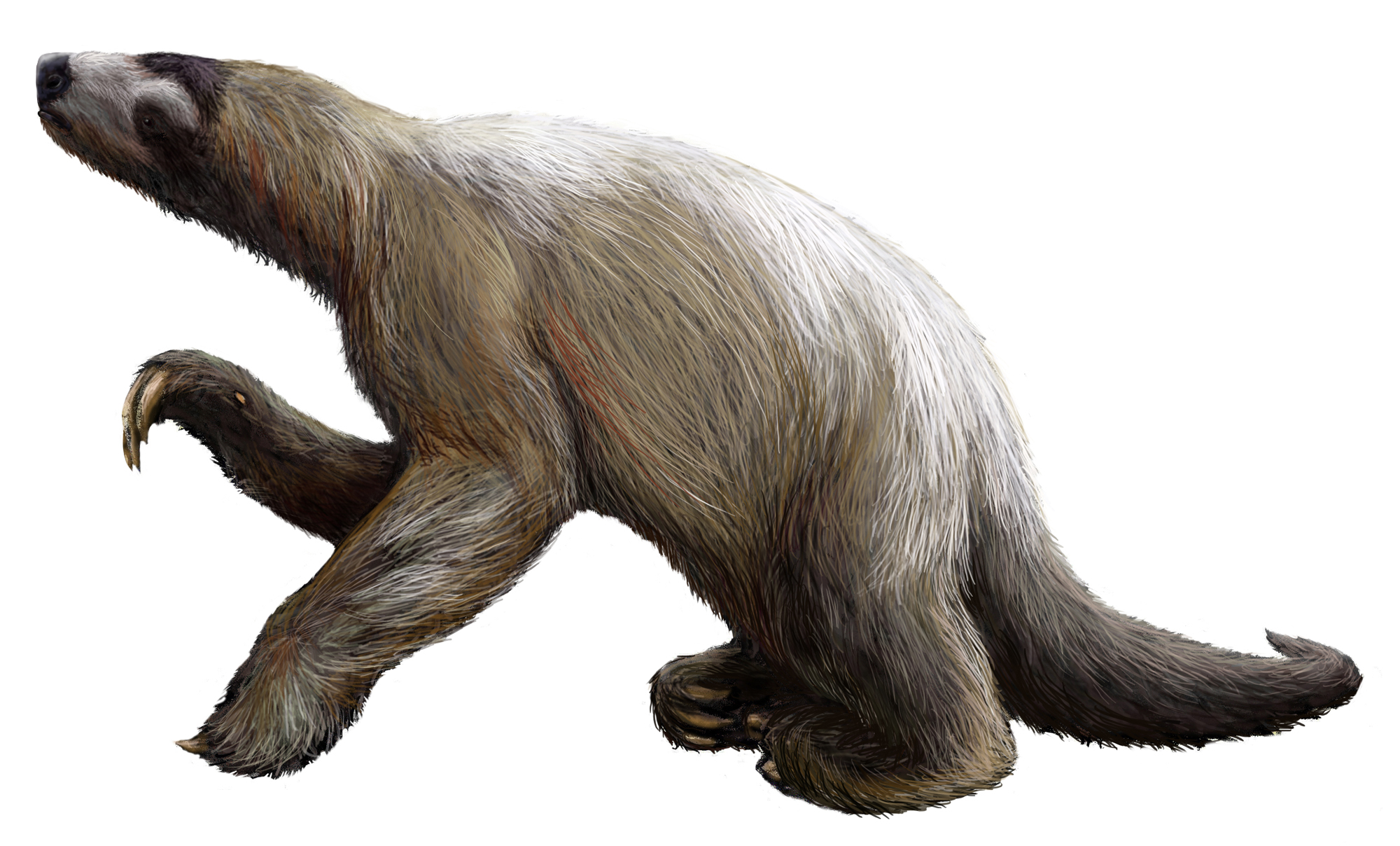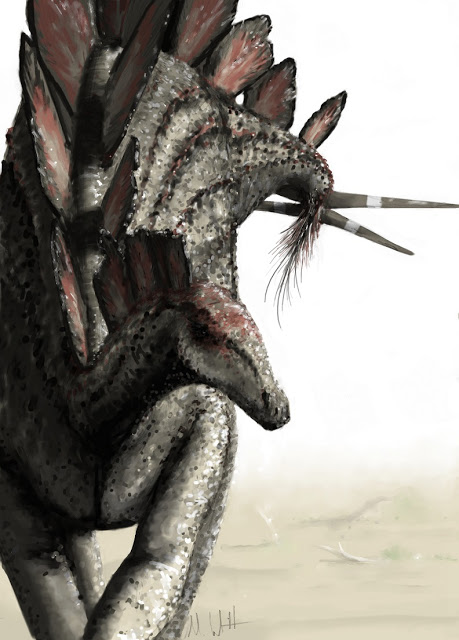As many of you already know, I attended the 73rd Meeting of the Society of Vertebrate Paleontology on Wednesday, Oct. 30 and Saturday, Nov. 2 and it was a positively thrilling experience to say the least. There were so many great discussions, presentations, discoveries, and people. I almost felt overwhelmed by the huge numbers of paleontologists, geologists, artists, and fellow bloggers I was able to meet at the event. I even got a few books signed, which was great. The Awards Banquet on Saturday was also especially inspiring and fun. There was only one downside which I should acknowledge: the cost. But it was really, truly worth every penny and I'm very grateful my parents allowed me to go.
Of course, the talks were the highlight of the event. I sadly missed the Thursday and Friday talks due to school, and thus was not there during the announcement of things like the Therizinosaur nesting colonies, T. rex having an Asia ancestry, an 11-ish meter Abeliosaurid from the late Cretaceous of Kenya, the bizarre new anatomy shown by a brand new specimen of Deinocheirus, and the possible resurrection of the genus Brontosaurus. I was fortunate to get updates on some of the talks by various people who were there the whole time, but I'll refrain from talking about them until properly published. Due to the fact that I saw so much new stuff, I'll try to make everything brief.
 |
New look for Deinocheirus
|
On the way out of the presentation halls, I was lucky enough to run into and have a short chat with Dr. Darren Naish, who's been a big influence on me to start up blogging and get into the whole scientific community in the first place. Even more of a shock was when he said he had seen my blog before! It was an honor to finally meet him after reading so many of his articles, and later at the Welcome Reception we had a short chat about Jehelornis' cool new tail feathers and he signed my edition of TetZoo Book 1. I was also able to briefly meet Dr. Jack Horner, while a fellow dinosaur pal of mine attended Day One of the conference and chatted with him for quite a bit.
.JPG) |
| Me (left), Dr. Darren Naish (middle) and my good friend Irlanda (right). |
.JPG) |
| Another pic with Me, Dr. Jack Horner, and Irlanda |
After that we attended the Welcome Reception at the LA County Museum of Natural History (the same one where I volunteer), where we talked with Dr. Luis Chiappe (curator and director of The Dinosaur Institute) briefly before he continued to greet the many guests. I also got to meet artist and fellow blogger Scott Hartman and me, my mom, and friend Irlanda all found people to chat with. After a while the Museum's famous dinosaur puppets came out to greet everyone. They're a T.rex named Hunter and a Trike named Dakota, both of which are juveniles. Everyone was mesmerized by the models. I am lucky I get to see them weekly.
We left the reception tired yet satisfied after having a wonderful experience. Sadly, due to schoolwork I was unable to return to SVP on either Thursday or Friday, and the fact that Halloween was the following day didn't help either. But I worked really hard to get all my work done so that I could return on Saturday, and a lot more fun ensued then.
Saturday, Nov. 2: I faced a dilemma when I got to SVP on Saturday. I couldn't decide which one of the morning sessions I should attend: the one on Polar animals, or the one on paravians and avians. I decided on neither, and ran into the mammal session which was starting. Luckily, the talk was on canids, and I coincidentally had just finished reading Wang and Tedford's Dogs: Their Fossil Relatives and Evolutionary History a few days prior, so I had an interest in the topic. They talked about how the ankle bone could be used to gauge certain species of canid's hunting behaviors and find out if they were ambush, pounce, or pursuit predators. I found the topic very interesting to say the least, and they had some very interesting interpretations about the evolution of modern wolf hunting.
 |
| According to the talk given, modern pursuit hunting typical of Grey Wolves might have been a recent invention. Previous species used other methods of hunting. |
However, another discovery from Alaska made me perk up once again. A new species of tyrannosaur was discovered in Prince Creek and is the apparent owner of the tooth material that has been discovered up there for the last few years. What's really interesting about it though is that it was suggested that it exhibits insular dwarfism, as it has a 600 mm skull (which is tiny for a tyrannosaur) yet shows signs of being fully grown. What implications this has for its biology and the ecology in the region has yet to be shown, but I find myself really liking this guy so far. Might be my new favorite dinosaur when he's properly named. :)
After the morning talks, we grabbed lunch and looked at all the posters in the poster hall. I got to meet and had a nice chat with Duane Nash from Antediluvian Salad and Southland Beaver, who wrote a post that was a big inspiration for my Kem Kem video I made awhile back. I walked over to a souvenir table with numerous pins of extinct animal skulls on it. I tried to identify them all, but failed horribly when it came to identifying the Champsosaurus skull (I need to read more literature about those guys...). Finally I settled on purchasing an awesome pewter Styracosaurus pin, which now accompanies me every day I work at the museum.
 |
| First time I ever misidentified an extinct animal's skull. Damn you, Champsosaurus... |
I then walked around for a bit, read some more posters on a possible new species of Edmontosaurus from Prince Creek and a fossil Rhino from Japan, chatted with someone about Dire Wolves, saw Mark Norell but didn't have a chance to say hi, and quickly ran downstairs to freshen up before the Awards Banquet. We sat down at a table with a bunch of students from Florida State University, and I got to chat with one of them about her graduate work concerning South American mega herbivores. They then started the presentation, and it was extremely inspiring for me. They honored paleontologists who had sadly passed earlier in the year, awarded some student scholarships, honored filmmaker Steven Spielberg (although sadly he could not attend) for his support of young paleontologists through his Jurassic Foundation, played clips from old dinosaur movies, handed out more awards, and finally the event ended with a speech given by Dr. Jack Horner, who was awarded the Romer-Simpson Prize for Lifetime Achievement — the highest honor one could receive from the Society.
After the banquet, we stopped into the after hours party but the atmosphere was not very conducive to chatting, so we called it a night. The entire way home I felt inspired and overjoyed to have had the chance to attend a world-class paleontology conference here in my own backyard and to be a member of such a prestigious society. I dream that I'll eventually be up there on a podium one day presenting my discoveries to the world. Until then, you can still catch me blogging here!
Stay sharp everybody!















